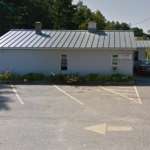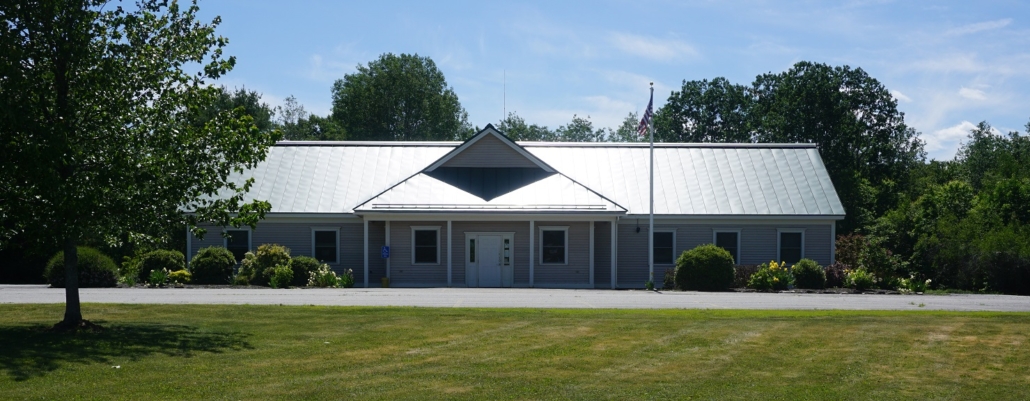Local referendum and election of officials on November 8 ballot
by Mary Grow
Vassalboro voters will have two local referendum questions and one local election on a Nov. 8 ballot, in addition to state and national decisions.
The referenda ask if voters will approve amendments to the town’s shoreland zoning ordinance and will appropriate up to $58,600 from surplus toward a $293,000 project to build sidewalks in East Vassalboro, with a federal grant covering the bulk of the cost. If the audience at the Sept. 8 public hearings on the two questions was representative of the town, the second question will be the more controversial.
The election is for Vassalboro’s representative on the Kennebec Water District, for three years. Gary Coull currently holds the position. Nomination papers are available at the town office; signed papers must be returned to the town clerk by Monday, Sept. 26, for candidates’ names to appear on the ballot.
Copies of the proposed shoreland zoning ordinance amendments are available on the Vassalboro website. Major changes involve rules for enlarging shorefront camps and houses that are too close to the water to meet current requirements.
Vassalboro now limits expansion to 15 percent of the existing structure, defined by floor area or volume. The proposed ordinance would allow up to 30 percent expansion, defined by floor area only. Depending on and varying with the distance between the building and the water, there are other size and height restrictions conforming to state standards.
At a Sept. 8 public hearing, Codes Officer Richard Dolby and planning board members emphasized that the changes, most of which copy recent changes in state guidelines, would make it easier for many waterfront property owners to enlarge their homes or camps.
“The [planning] board has gone a long way to utilize the allowances that the state thinks are reasonable,” Dolby said.
Veteran board member Douglas Phillips called the proposed ordinance “far less restrictive” than the current one and “a welcome change for people who have shoreland property.”
If voters reject the changes on Nov. 8, the current ordinance will remain as it is.
A second public hearing, on the request for funds for East Vassalboro sidewalks, found the audience of about 30 people divided into three groups. Some people want the sidewalks; some cannot see where they would fit in the built-up area; a few object to spending town money on a project that would benefit only a small section of Vassalboro.
To the last group, sidewalk proponent Holly Weidner replied that more than 2,500 vehicles go through East Vassalboro daily, bringing people from all parts of town and outside to the boat landing, library, Grange Hall and other public buildings. Sidewalks would make the area safer not only for residents but for drivers and cyclists.
Patrick Adams, manager of bicycle and pedestrian programs for the state Department of Transportation, emphasized repeatedly that no decisions have been made about finding space for a sidewalk. His role, he said, is to balance needs of motorists, pedestrians and cyclists to maximize safety for everyone.
The state will rebuild Route 32 in the next few years (the original 2018 date might be pushed back to 2019) and will add five-foot shoulders on each side, creating a wider vehicle pathway that will encourage drivers to go faster, he said.
Residents said drivers already routinely ignore the 25-mile-an-hour limit, leading to a discussion of enforcing speed limits as a complementary or alternative way to increase safety. Enforcement, too, costs money; it is not a permanent solution and would be paid for entirely by the town, Weidner said.
Because houses are close to Main Street on both sides, people were concerned that a sidewalk would come almost to homeowners’ front doors, would eliminate parking space for their vehicles in their driveways and would limit parking at the post office (if the sidewalk were on the east side of the street).
Adams said if Vassalboro voters approve the sidewalk project on Nov. 8, the first expenditures will be for planning. Only then will engineers decide which side of Main Street can better accommodate a sidewalk and how to adjust it to existing conditions. He believes most of the work can be done within the existing road right-of-way.
Vassalboro will participate in design work, and if the result is not satisfactory, “the town” could opt out of the project and the remaining expenditures, Adams said. He declined to define “the town,” saying that deciding if the selectmen, voters or some other body should approve or reject the design was a local decision.
A new issue in the sidewalk debate is maintenance. Vassalboro has not maintained existing sidewalks in North Vassalboro, which long-time local residents concluded date from the 1960s. However, earlier in the day Adams told selectmen the town would be required to plow and sand and as necessary repair East Vassalboro sidewalks.
He explained that because federal money will help with the project and because the federal government is becoming fussier about maintaining projects, the state will also become stricter.
Because selectmen just learned of the maintenance requirement, they had not discussed potential methods or costs, Selectman Lauchlin Titus said. Board members plan to collect information in time to provide estimates before the Nov. 8 decision. According to a fact sheet prepared for the hearing, Vassalboro received a Federal Transportation Enhancement grant in 2013 for safety improvements in East Vassalboro, including sidewalks. The current plan calls for sidewalks on Main Street from the boat landing to the Grange Hall and on Bog Road to the library. (ep)
Federal funds require a 20 percent match from Vassalboro. By piggybacking on the state’s Route 32 reconstruction, the state will pay for the shoulders that would otherwise have been part of the sidewalk costs. Titus said the Vassalboro Budget Committee endorsed the $58,600 appropriation on a 7 to 3 vote at an Aug. 25 meeting. The project has also divided the selectmen; Titus and board Chairman Philip Haines support it, Robert Browne thinks it is a costly non-solution to traffic problems in East Vassalboro.
Completion of the state project will be followed by five-year moratorium on any additional construction, including town projects.
The two public hearings were followed by a short Vassalboro selectmen’s meeting at which the board approved the ballot questions for Nov. 8. Board Chairman Philip Haines thanked planning board members for their work on the shoreland ordinance.
The next regular Vassalboro selectmen’s meeting will be Thursday evening, Sept. 22.
Responsible journalism is hard work!
It is also expensive!
If you enjoy reading The Town Line and the good news we bring you each week, would you consider a donation to help us continue the work we’re doing?
The Town Line is a 501(c)(3) nonprofit private foundation, and all donations are tax deductible under the Internal Revenue Service code.
To help, please visit our online donation page or mail a check payable to The Town Line, PO Box 89, South China, ME 04358. Your contribution is appreciated!





Leave a Reply
Want to join the discussion?Feel free to contribute!